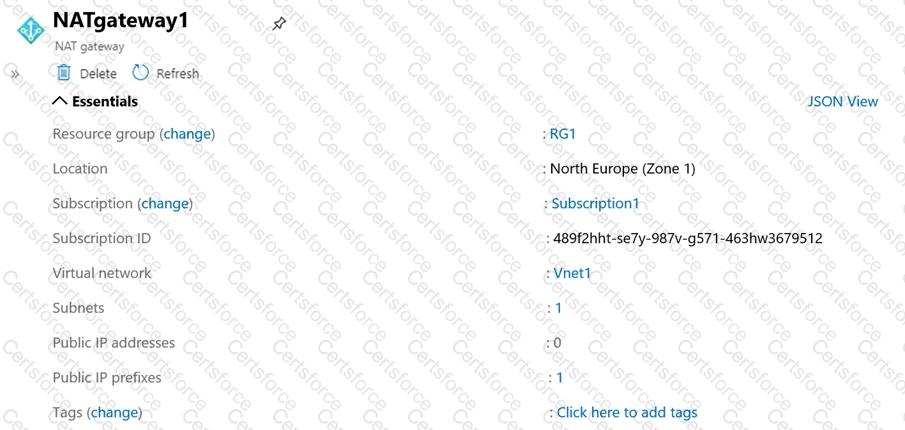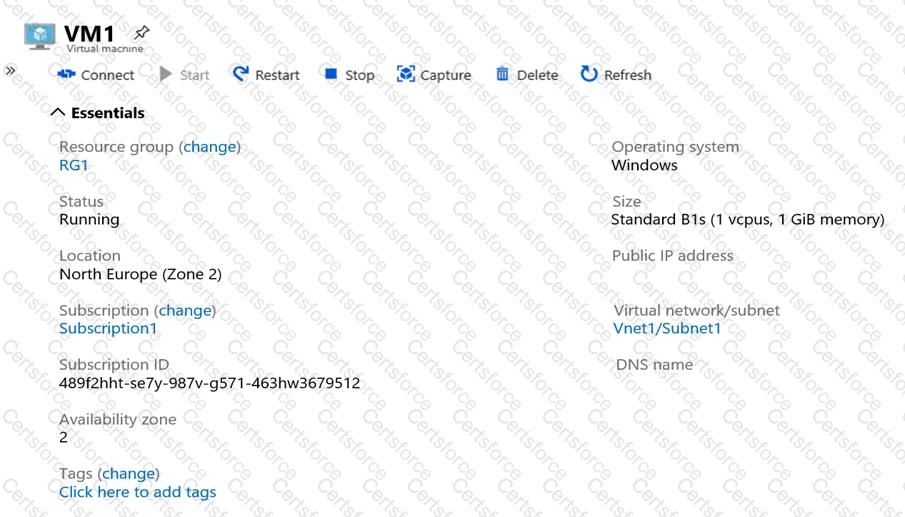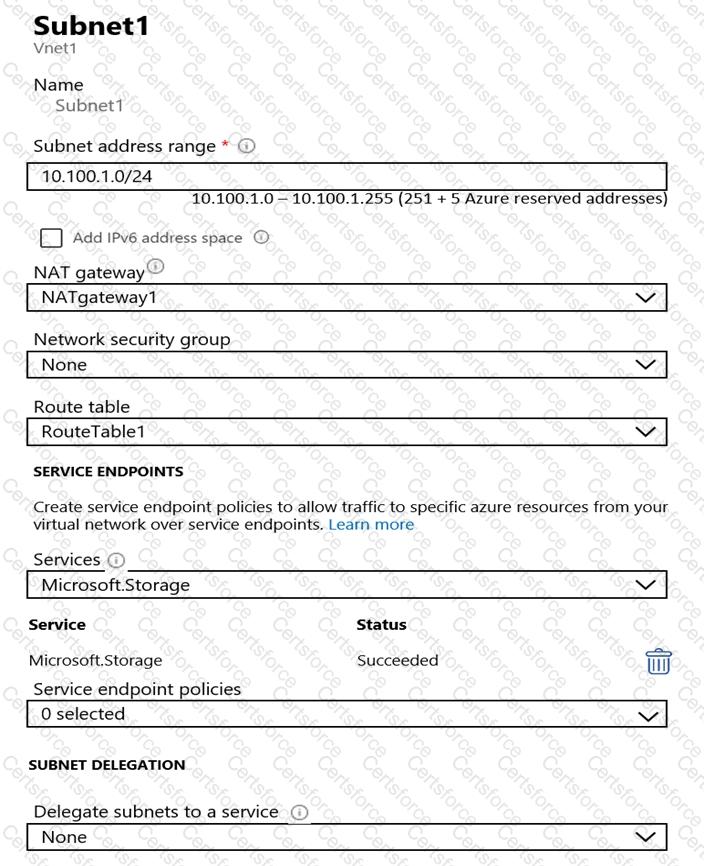You need to provide access to storage2. The solution must meet the PaaS networking requirements and the business requirements.
Which connectivity method should you use?
You have an Azure virtual machine named VM1.
You need to capture all the network traffic of VM1 by using Azure Network Watcher.
To which locations can the capture be written?
Note: This question is part of a series of questions that present the same scenario. Each question in the series contains a unique solution that might meet the stated goals. Some question sets might have more than one correct solution, while others might not have a correct solution.
After you answer a question in this section, you will NOT be able to return to it. As a result, these questions will not appear in the review screen.
You have two Azure virtual networks named Vnet1 and Vnet2.
You have a Windows 10 device named Client1 that connects to Vnet1 by using a Point-to-Site (P2S) IKEv2 VPN.
You implement virtual network peering between Vnet1 and Vnet2. Vnet1 allows gateway transit. Vnet2 can use the remote gateway.
You discover that Client1 cannot communicate with Vnet2.
You need to ensure that Client1 can communicate with Vnet2.
Solution: You enable BGP on the gateway of Vnet1.
Does this meet the goal?
You have an Azure subscription that contains the resources shown in the following table.

You create a virtual network named Vnet2 in the West US region.
You plan to enable peering between Vnet1 and Vnet2.
You need to ensure that the virtual machines connected to Vnet2 can connect to VM1 and VM2 via LB1.
What should you do?
You have an Azure virtual network named Vnet1 that contains two subnets named Subnet1 and Subnet2.
You have the NAT gateway shown in the NATgateway1 exhibit.

You have the virtual machine shown in the VM1 exhibit.

Subnet1 is configured as shown in the Subnet1 exhibit.

For each of the following statements, select Yes of the statement is true. Otherwise, select No.
NOTE: Each correct selection is worth one point.

You have an on-premises network
You have an Azure subscription that contains a virtual network named VNet1. VNet1 contains an ExpressRoute gateway named Gateway 1.
You need to implement an ExpressRoute solution from a third-party provider named Fabrikam, Inc. The solution must ensure that devices on the on-premises network can connect to the Azure resources on VNet1.
Which four actions should you perform in sequence? To answer, move the appropriate actions from the list of actions to the answer area and arrange them in the correct order.

You have an Azure subscription that contains an ExpressRoute Standard gateway named GW1.
You need to upgrade GW1 to support ExpressRoute FastPath. The solution must minimize downtime.
Which SKU should you use?
ION NO: 18
Note: This question is part of a series of questions that present the same scenario. Each question in the series contains a unique solution that might meet the stated goals. Some question sets might have more than one correct solution, while others might not have a correct solution.
After you answer a question in this section, you will NOT be able to return to it. As a result, these questions will not appear in the review screen.
You have an Azure application gateway that has Azure Web Application Firewall (WAF) enabled.
You configure the application gateway to direct traffic to the URL of the application gateway.
You attempt to access the URL and receive an HTTP 403 error. You view the diagnostics log and discover the following error.

You need to ensure that the URL is accessible through the application gateway.
Solution: You create a WAF policy exclusion for request headers that contain 137.135.10.24.
Does this meet the goal?
Task 11
You are preparing to connect your on-premises network to VNET4 by using a Site-to-Site VPN. The on-premises endpoint of the VPN will be created on a firewall named Firewall 1.
The on-premises network has the following configurations:
• Internal address range: 10.10.0.0/16.
• Firewall 1 internal IP address: 10.10.1.1.
• Firewall1 public IP address: 131.107.50.60.
BGP is NOT used.
You need to create the object that will provide the IP addressing configuration of the on-premises network to the Site-to-Site VPN. You do NOT need to create a virtual network gateway to complete this task.
Task 6
You need to ensure that all hosts deployed to subnet3-2 connect to the internet by using the same static public IP address. The solution must minimize administrative effort when adding hosts to the subnet.